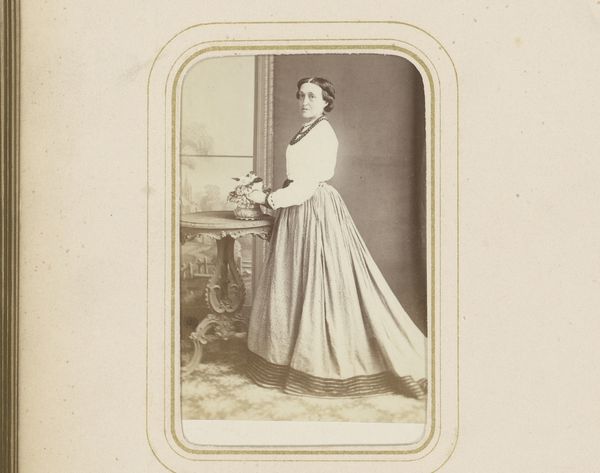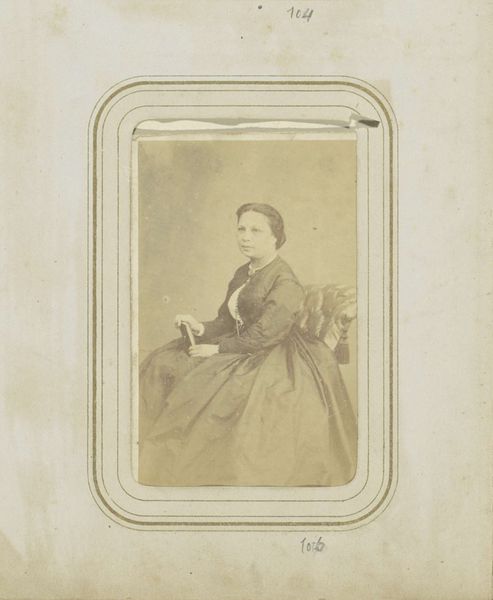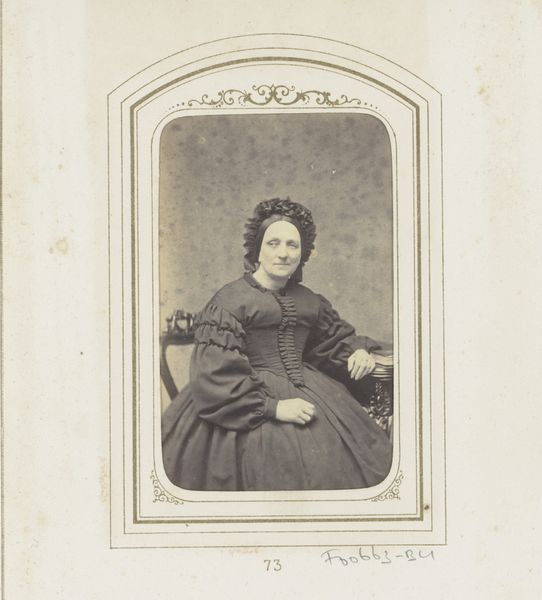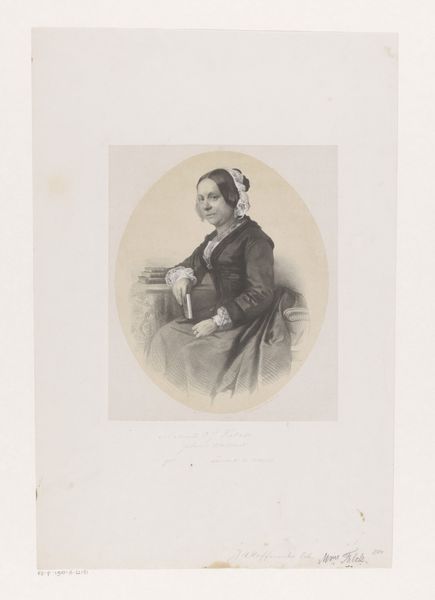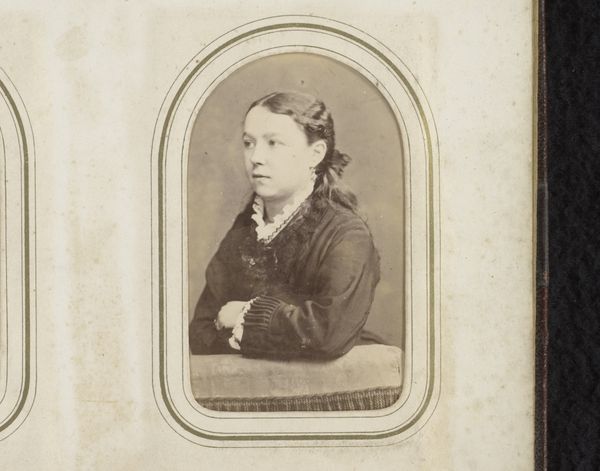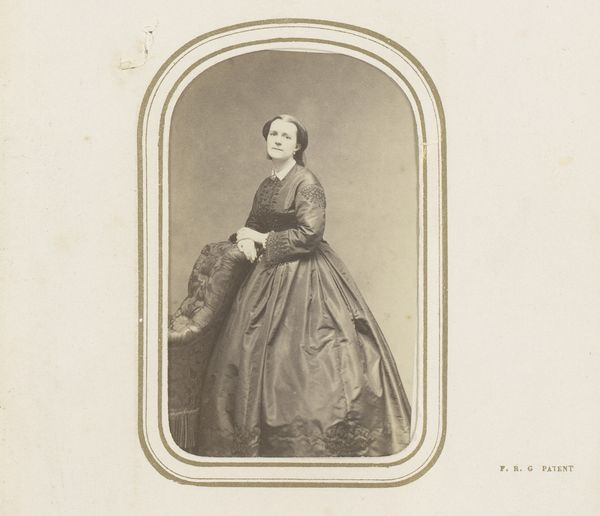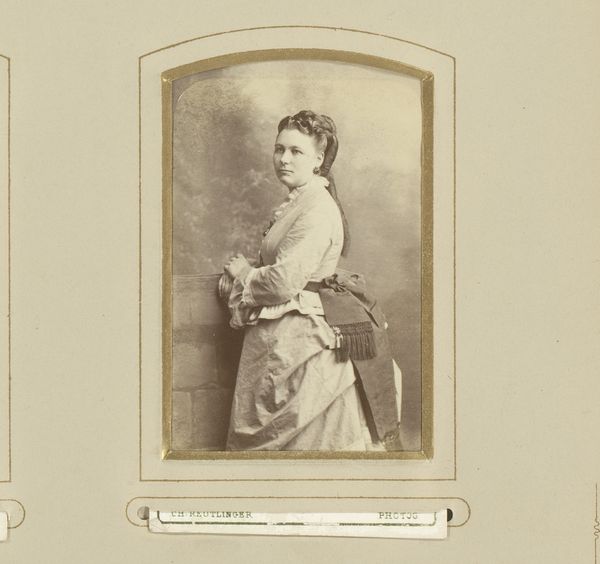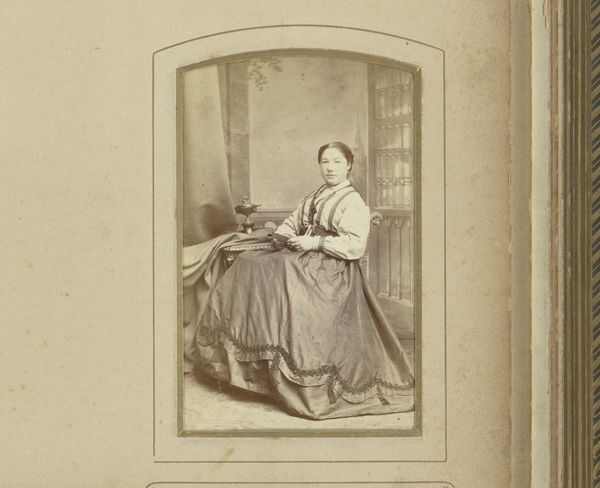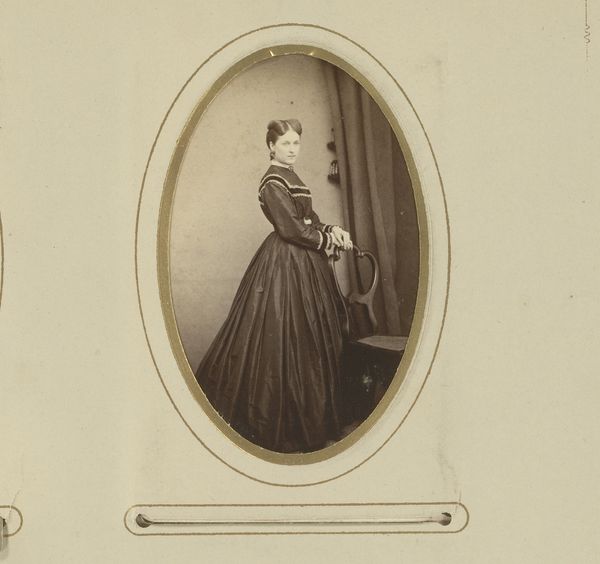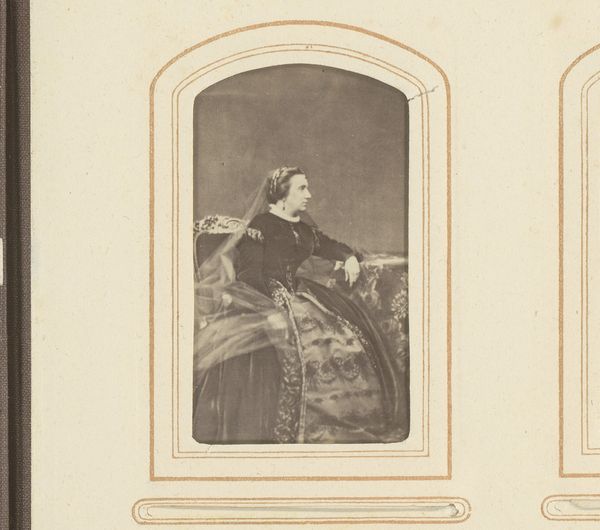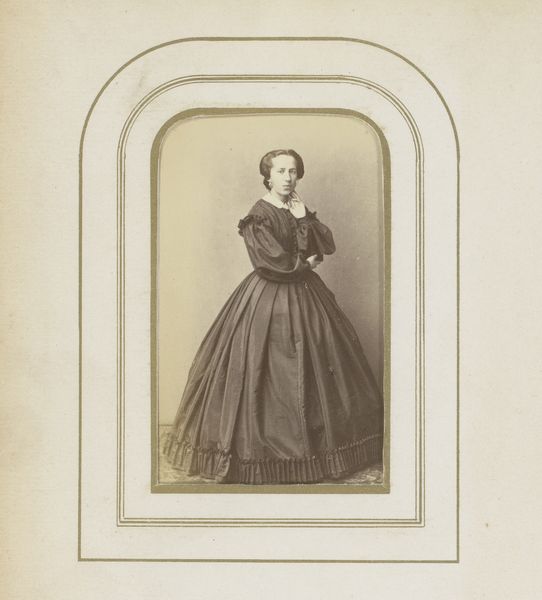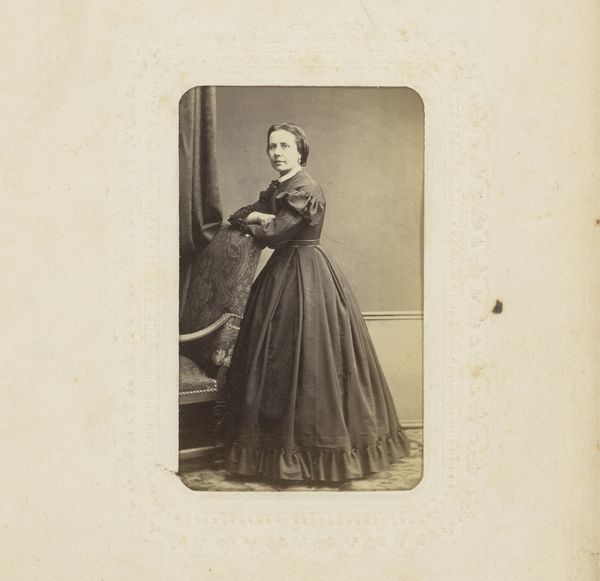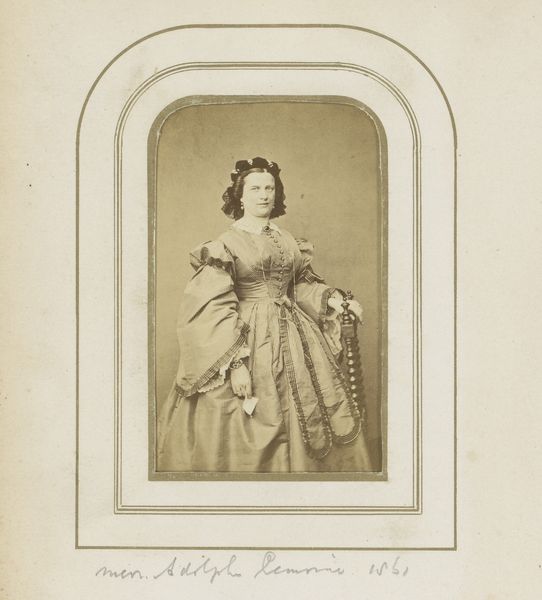
photography, albumen-print
#
portrait
#
charcoal drawing
#
photography
#
19th century
#
albumen-print
#
realism
Dimensions: height 83 mm, width 50 mm
Copyright: Rijks Museum: Open Domain
Editor: Here we have "Portret van een vrouw," or "Portrait of a Woman," created between 1862 and 1866 by Billotte Frères. It’s an albumen print, giving it a sepia-toned warmth. I find her expression quite intriguing, almost melancholy. What formal elements strike you in this piece? Curator: Immediately, it's the masterful manipulation of light and shadow. Notice how the albumen print’s inherent qualities lend themselves to a subtle gradient across her face, directing our gaze. How does this careful use of tonal variation contribute to the overall composition in your view? Editor: It seems to sculpt her face, highlighting the cheekbone and drawing attention to her thoughtful expression. It also softens the photograph, making it more intimate. I'm curious, does the composition have a name, and does it draw from previous eras of art making? Curator: The composition reveals a structured formality typical of 19th-century portraiture. Note the careful balancing of the figure within the frame and the subtle play of lines created by her dress and the chair. Her body guides your eye upwards from her waistline. Do you agree? Editor: Yes, the upward gaze feels very intentional. I hadn’t noticed the framing device, that subtle set of curved edges and straight lines as a frame within a frame. Curator: Precisely. It serves to isolate and elevate the subject. We can analyze the subtle tonal variations within this nested frame to suggest an echo chamber for her gaze, highlighting its introspective mood. Considering the technological innovation of albumen prints at this time, would you say the Billotte Frères were using this medium in a conventional manner? Editor: Given how atmospheric it is, it seems like they may be embracing this as more of an artistic endeavor rather than only as a tool for documentation. I appreciate the new way of looking at it through a close study of its structure and light. Curator: Indeed, sometimes technique IS the artistic gesture, not only what it depicts.
Comments
No comments
Be the first to comment and join the conversation on the ultimate creative platform.
